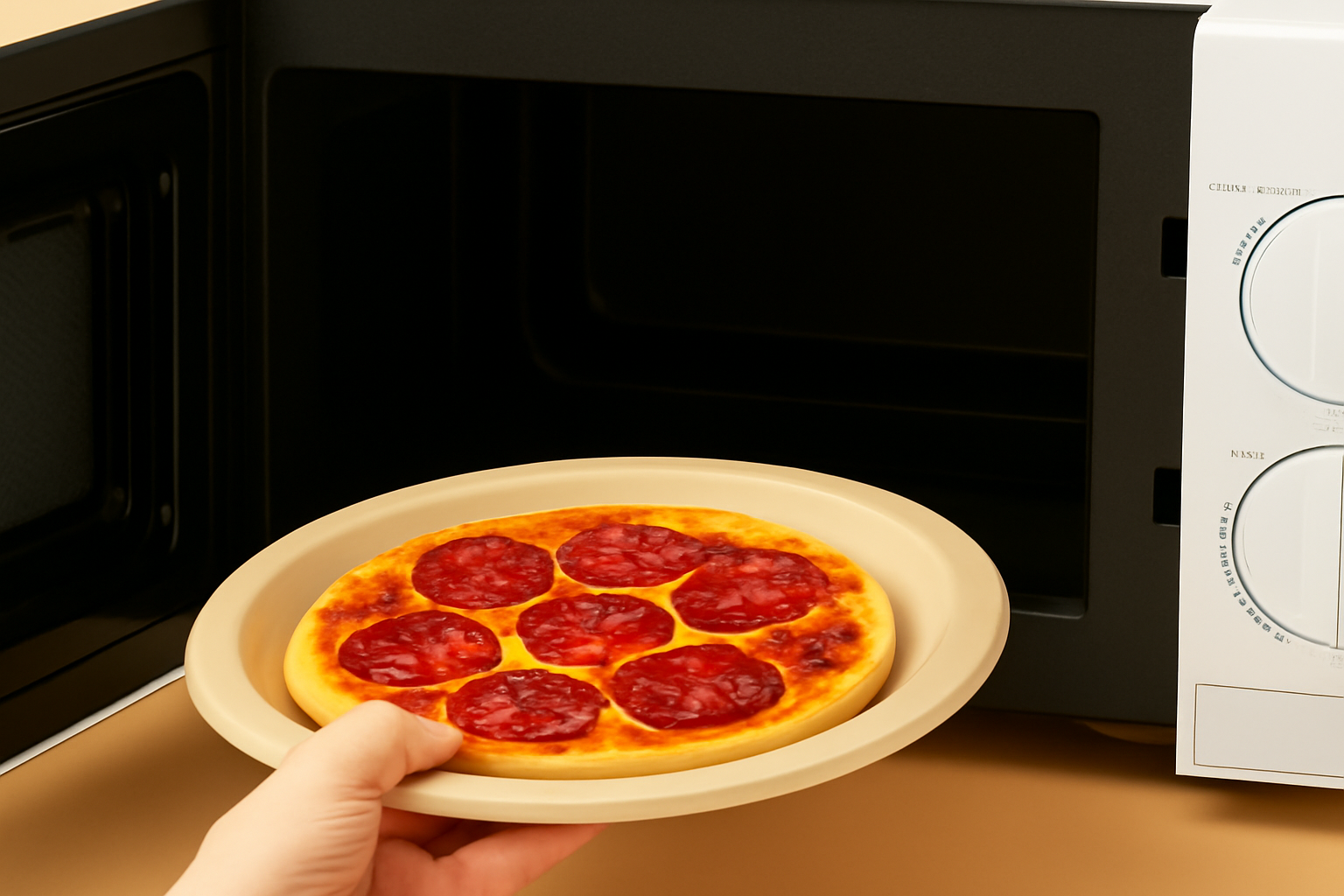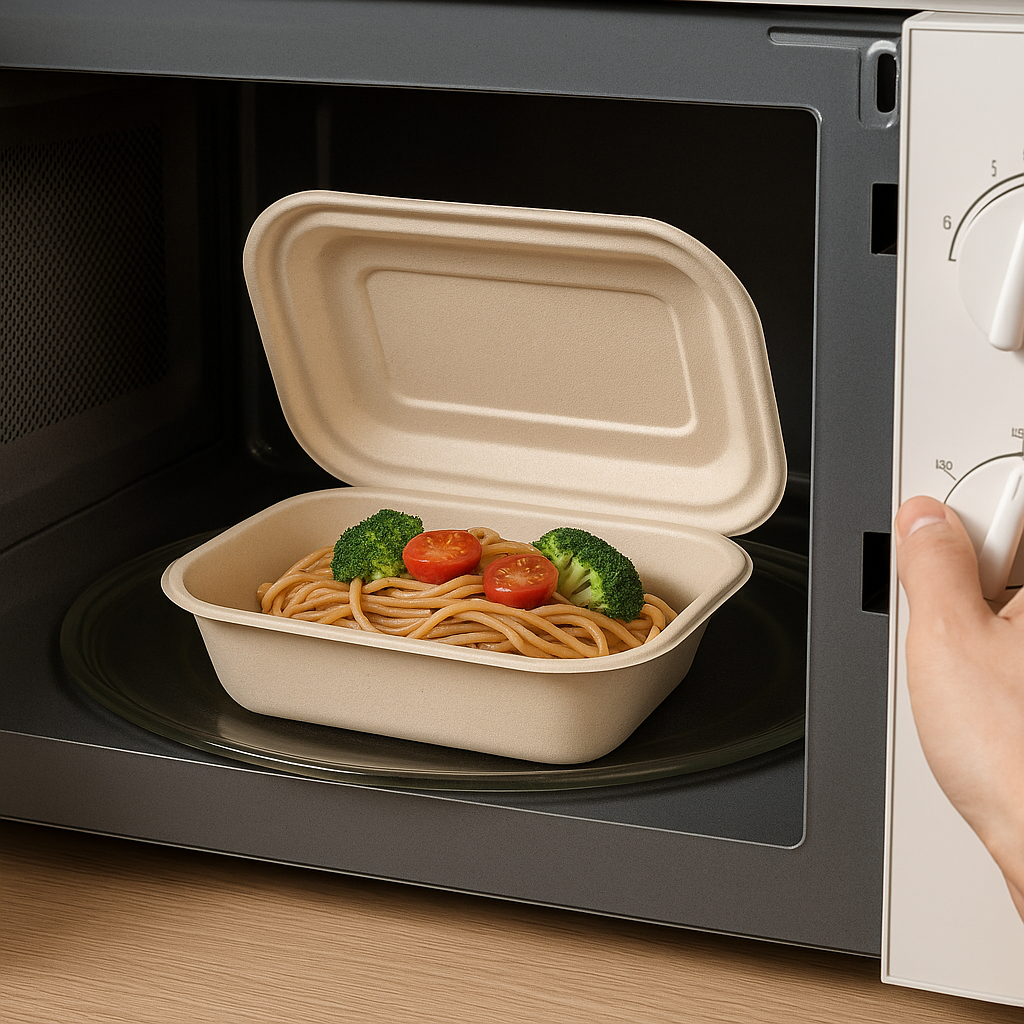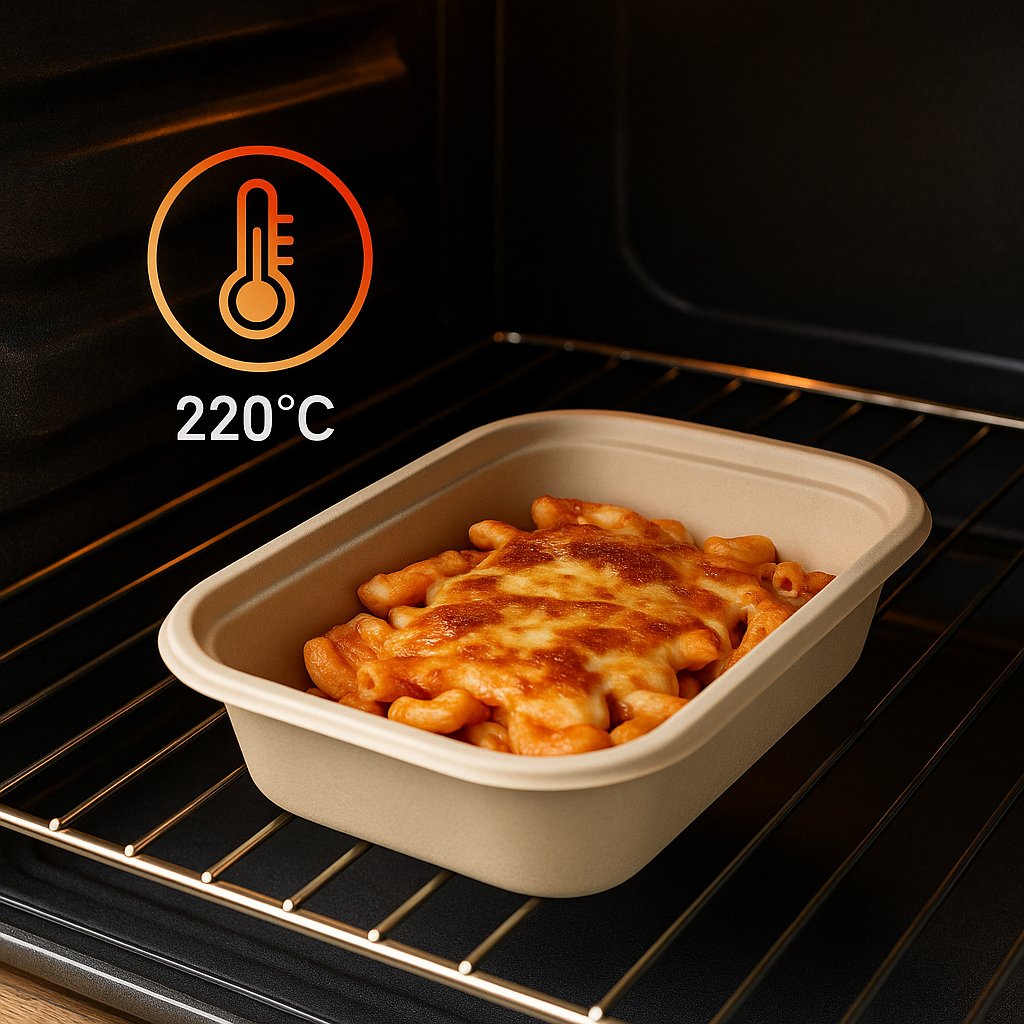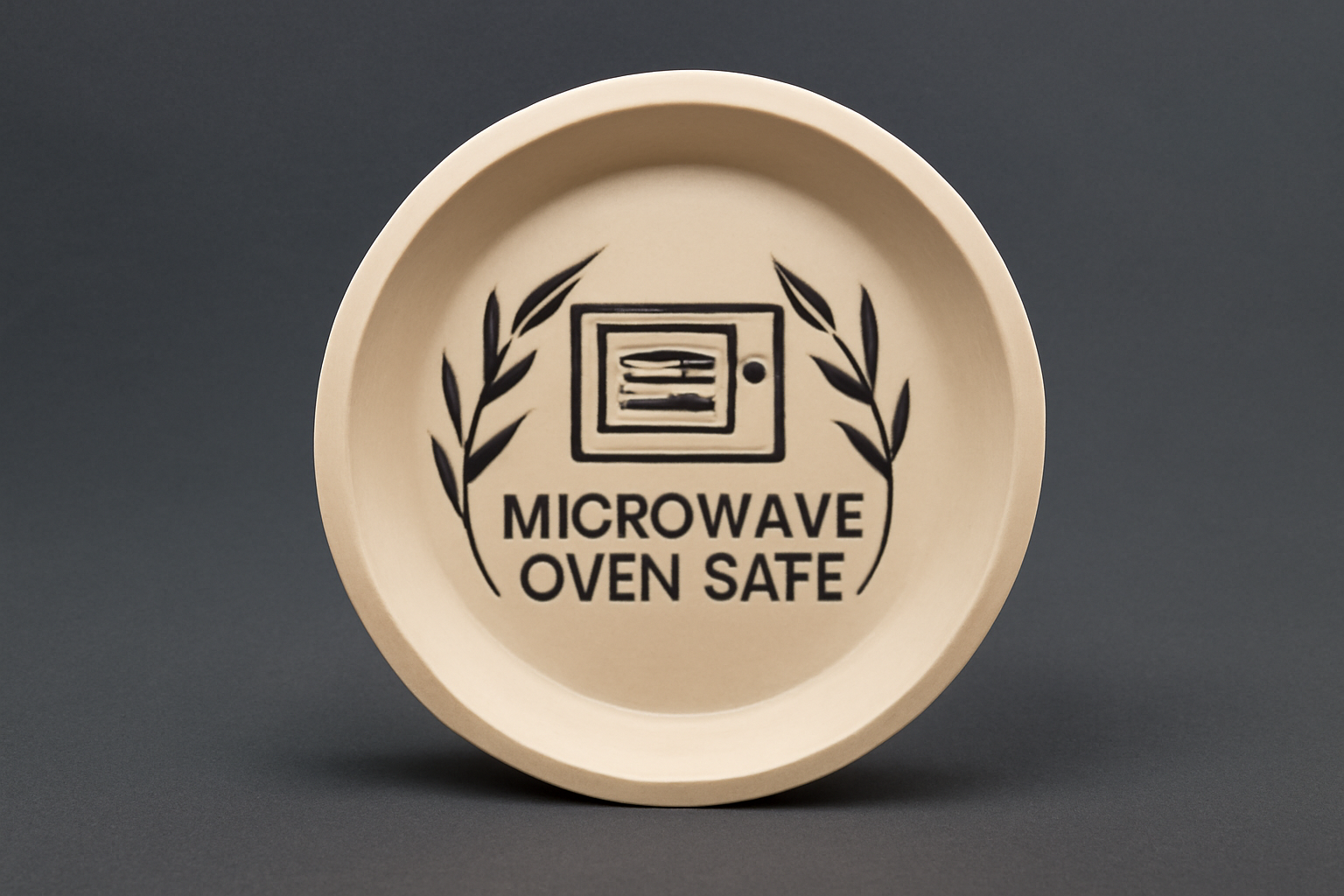
Using the wrong plate in the oven can cause breakage or chemical release.
Only oven-safe plates can withstand high heat without damage or safety risks.
Let me guide you through which materials work—and which ones don’t.
What Does “Oven-Safe” Mean?
Many plates look sturdy but fail under high heat.
Oven-safe means a plate can endure oven temperatures without cracking or releasing toxins.
Key Features That Define “Oven-Safe”
When I evaluate whether a plate is oven-safe, I always check five factors: material, manufacturing process, thickness, surface finish, and certifications. Ceramic, tempered glass, and metal are often safe. But not all ceramics are the same, and thin or coated items can still fail under heat.
Here’s how I break it down:
| Factor | Why It Matters |
|---|---|
| Material | Affects heat tolerance |
| Manufacturing Process | Determines structural durability |
| Thickness | Thicker plates resist heat better |
| Coating/Decorations | Some glazes or finishes may crack or emit fumes |
| Certifications | FDA, LFGB, or oven-safe icon confirms safety |
Are Traditional Plate Materials Safe for Oven Use?
Some traditional plates are safe in the oven—others are not.
Material, condition, and temperature all determine whether traditional plates are oven-safe.

My Experience with Common Plate Types
I’ve tested many types of plates in ovens. Ceramic and porcelain plates usually work well up to around 177°C (350°F), but they must be free of cracks or metal trims. Tempered glass plates like Pyrex can go higher—up to 218°C (425°F)—but can shatter from sudden temperature changes.
Metal plates—stainless steel or aluminum—handle high heat easily, but they’re not microwave-safe. Regular plastic plates melt or deform around 65°C (150°F), while bioplastics such as PLA or biodegradable PP are even less heat-tolerant, maxing out at 60°C (140°F).
| Material Type | Oven-Safe? | Max Temp (approx.) | Cautions |
|---|---|---|---|
| Ceramic/Porcelain | Yes (most cases) | ~350°F / 177°C | Avoid cracks, metal decorations |
| Tempered Glass | Yes | ~425°F / 218°C | Avoid thermal shock |
| Metal | Yes | ~500°F / 260°C | Not microwave-safe |
| Conventional Plastics | No | ~150°F / 65°C | Melt or warp easily |
| Bioplastics (PLA, PP) | Mostly No | ~140°F / 60°C | Not recommended for oven use |
Can Disposable Eco-Friendly Plates Go in the Oven?
Eco-friendly doesn’t always mean heat-resistant.
Only a few disposable eco-friendly plates can be safely used in ovens.

Let’s Break Down the Options
Pure Bamboo Fiber Tableware
This is the material I recommend most confidently. PANABAM’s 100% pure bamboo fiber plates are heat-resistant up to 220°C (428°F). These are molded without glue or synthetic binders, making them not only safe for the oven but also fully compostable. We use them in catering, sampling, and baking environments, and they hold their shape without releasing any odor or residue.
Paper Plates
Paper plates are common, but not oven-safe. Most are coated with a thin layer of plastic or wax for waterproofing. That coating starts to melt around 93°C (200°F) and may release unpleasant smells. I avoid them entirely for heating.
Palm Leaf Plates
Palm leaf plates are made from naturally fallen leaves. They’re strong, beautiful, and biodegradable. They can tolerate oven temperatures up to around 180°C (356°F) for short durations. However, under extended heat, they may warp or release moisture. I recommend using them for warm serving—not direct baking.
Bagasse Plates
Bagasse plates are made from sugarcane fiber left after juice extraction. These plates typically handle heat up to 120°C (248°F). They are suitable for light reheating and serving warm food but not recommended for direct oven baking, especially at high temperatures or for extended periods.
Starch-Based Tableware
These biodegradable plates are often marketed as eco-safe, but they can’t handle oven temperatures. Most of them melt or lose their shape around 100°C (212°F). I only use them for cold or room-temperature meals.
Wooden Plates
Wooden tableware has visual appeal and natural strength. But wood dries and cracks under heat. It also poses fire risk if exposed to very high oven temperatures. I don’t recommend using wood in ovens.
Composite Materials
Some eco-friendly plates mix bamboo fiber with PLA or other bioplastics. Their heat resistance varies by composition. I always confirm performance data with the supplier before recommending them for heating.
| Material | Oven-Safe? | Max Temp | Notes |
|---|---|---|---|
| Pure Bamboo Fiber | Yes | 428°F / 220°C | Oven-safe, compostable, no additives |
| Paper (coated) | No | ~200°F / 93°C | Only for cold or brief microwave use |
| Palm Leaf Plates | Limited | ~356°F / 180°C | Suitable for short heating, not baking |
| Bagasse Plates | Limited | ~248°F / 120°C | Reheating OK, not for extended oven use |
| Starch-Based Tableware | No | ~212°F / 100°C | Melts under oven heat |
| PLA / Biodegradable PP | Mostly No | ~140°F / 60°C | Poor oven performance |
| Wood | No | Flammable | May crack or burn in oven |
| Fiber + Bioplastics Composite | Varies | Ask supplier | Always confirm heat tolerance |
How Can I Tell If a Plate Is Oven-Safe?
Guessing doesn’t work—it can damage both food and equipment.
Always verify material, condition, and product label before placing any plate in the oven.
![]()
What I Recommend Checking
- Look for oven-safe icons or max temperature labels on packaging.
- Know your material type—bamboo fiber, ceramic, glass, or plastic.
- Avoid using plates with metal trims, cracks, or unknown glazes.
- If unsure, contact the manufacturer. I always provide heat specifications for PANABAM products on request.
What’s the Right Way to Use Oven-Safe Plates?
Even oven-safe plates can fail if used carelessly.
Simple usage tips can help avoid breakage and protect your food.
Tips I Follow and Recommend
- Avoid sudden temperature shifts—don’t move cold plates straight into a hot oven.
- Use oven mitts—even bamboo fiber plates get hot after a few minutes.
- Don’t exceed the product’s maximum rated temperature.
- Avoid using cracked, warped, or previously overheated items again.
These habits keep food safe and plates intact.
How Is PANABAM Bamboo Fiber Tableware Made?
We believe eco-products should be durable and functional—not just green.
Our plates are produced through a precise and sustainable process that ensures oven safety.

A Closer Look at Our Process
We follow a strict production workflow at PANABAM that balances efficiency, safety, and eco-responsibility:
| Step | Description |
|---|---|
| Raw Material | Fast-growing bamboo harvested sustainably |
| Classification | Fibers graded by density and purity |
| Chipping | Bamboo cut into uniform small pieces |
| Pulping & Refining | Processed into fine slurry without chemicals |
| Slurry Preparation | Water-adjusted mixture prepared for forming |
| Cold Pressing | Plates shaped with pressure into molds |
| Hot Press Drying | Thermal process stabilizes structure and removes moisture |
| Trimming | Edges cut and smoothed for uniformity |
| Testing | Heat, weight, and structural tests performed |
| Packaging | Hygienically sealed and ready for distribution |
The result is a pure, biodegradable, food-safe plate that resists heat up to 220°C (428°F) and performs consistently in real food-service settings.
Why PANABAM Is Trusted by Food Businesses Worldwide
We serve businesses that demand more than just sustainability.
Restaurants, caterers, retailers, and wholesalers rely on PANABAM for certified quality and supply stability.
Whether for bulk purchasing or branded customization, we provide tailored solutions. Our plates are used in:
- Eco-conscious restaurants
- Airline and hotel food services
- Corporate catering events
- Grocery and zero-waste retail stores
- International distributors complying with plastic bans
| Feature | PANABAM Advantage |
|---|---|
| Heat Resistance | Up to 428°F / 220°C |
| Safety Certifications | FDA, LFGB, compostable |
| Material Integrity | 100% pure bamboo fiber, no glue or plastic |
| Production Capacity | Automated lines with consistent quality |
| Customization Options | Sizes, shapes, private labels available |
| B2B Support | Technical data, samples, and fast response |
We understand what wholesale buyers, catering companies, and sustainability-focused retailers care about. That’s why we focus on performance, pricing, and professional service.
Conclusion
Oven safety depends on material and design—pure bamboo fiber from PANABAM is the eco-friendly option that won’t let you down.
FAQ
How do you know if a plate is oven safe?
To determine if a plate is oven-safe, always check the product label or markings. Look for specific symbols, such as an oven icon, or labels that say "oven-safe." You can also confirm the material type—ceramics, tempered glass, and certain metals are generally oven-safe. Avoid plates with cracks or decorative elements like metal rims, as these can heat unevenly and may crack under high temperatures.
Can you put a plate in the oven at 350°F?
Yes, most oven-safe plates can handle temperatures up to 350°F (177°C). However, be cautious with materials like plastic or biodegradable plastics, as they often cannot withstand the heat. If you’re unsure, always check the manufacturer’s instructions or symbols on the plate to ensure it’s safe to use in the oven at this temperature.
What type of plate can go in the oven?
The types of plates that can safely go in the oven include:
- Ceramic plates (without metallic decorations or cracks)
- Porcelain plates (if marked oven-safe)
- Tempered glass plates (like Pyrex, which is heat-resistant)
- Stoneware plates (durable and heat-resistant, but check for glaze or cracks)
- Bamboo fiber plates (up to 220°C / 428°F for certain eco-friendly products)
Is dinnerware oven-safe?
Not all dinnerware is oven-safe. It’s essential to check if the material is designed for high temperatures. For instance, ceramic and porcelain dinnerware can usually withstand moderate oven temperatures, but plastic and biodegradable plastics cannot. Always refer to labels or manufacturer’s guidelines.
Are most plates oven proof?
No, most plates are not oven-proof, especially those made from plastic, paper, or certain bioplastics. Ceramic, porcelain, and tempered glass plates are typically oven-safe, but it’s important to check for oven-safe labels and avoid plates with cracks or decorations that might not tolerate heat.
Is porcelain oven-safe?
Yes, porcelain is generally oven-safe up to a certain temperature, usually around 350°F (177°C). However, it’s essential to check for specific product labeling or manufacturer instructions. Porcelain plates without metallic decorations are often safe to use in the oven, but always confirm before placing them in high heat.
Can you put plastic wrap in the oven?
No, plastic wrap is not safe for oven use. It can melt or release harmful chemicals at high temperatures. If you need to cover food, use oven-safe lids, foil, or parchment paper instead. Always check the temperature limits of plastic materials before using them in any heat-intensive environment.
Can I put a ceramic plate in the oven?
Yes, ceramic plates can go in the oven if they are specifically labeled as oven-safe. Most ceramic dinnerware can withstand temperatures up to 350°F (177°C). However, avoid ceramic plates with metallic trims, cracks, or chips, as they can break when exposed to high heat. Always check product labeling.
Can you put a plate in the microwave?
Yes, most ceramic, porcelain, and glass plates are safe to use in the microwave, but always check for a microwave-safe label. Bamboo fiber plates are also microwave-safe. Since they are designed to withstand oven temperatures, they can safely handle the microwave as well. However, plates with metal components or decorative metallic trims should not be used in the microwave as they can cause sparks or fires.

Ann
Hi, I’m Ann, and with over 5 years of experience in the foodservice industry, I’ve had the pleasure of working with restaurants and catering businesses to develop eco-friendly, tailored solutions that help you thrive in today’s green economy. I’m passionate about sustainability and committed to providing high-quality products that align with your values.
If you’re looking to make the switch to eco-friendly, sustainable tableware, I’m here to help! Reach out today, and let’s explore how we can support your business’s goals while contributing to a healthier planet.

